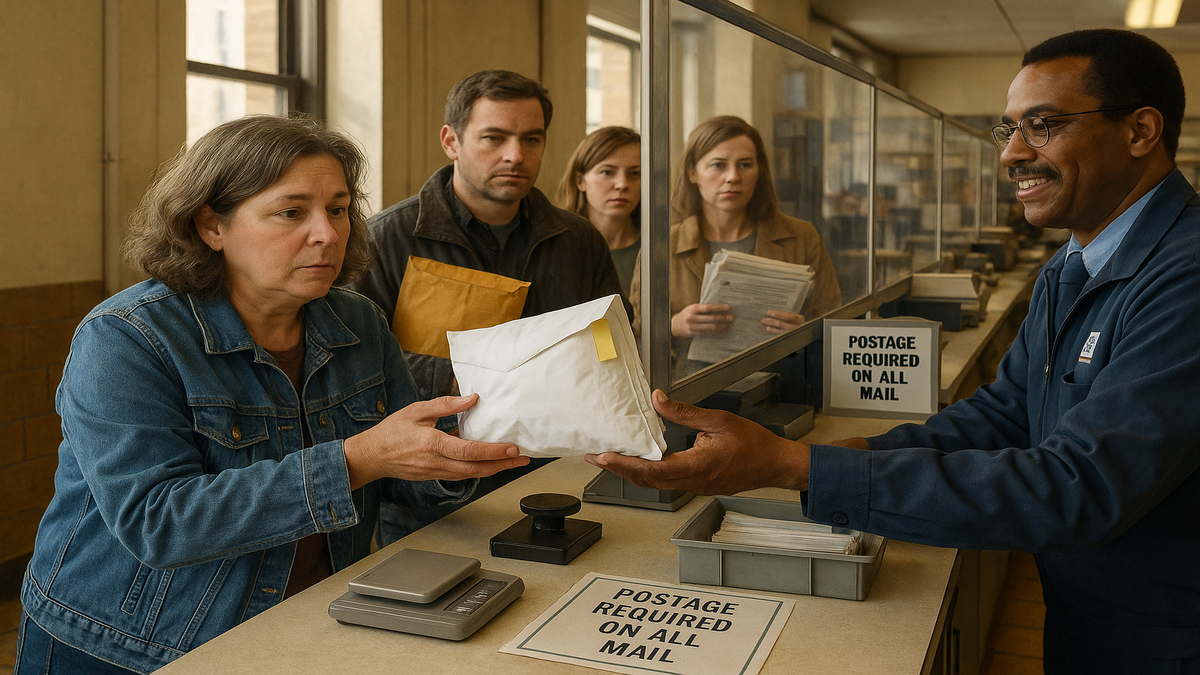As tax season came and went this year, I kept hearing a familiar question: “Can you send a tax return in a regular envelope?” The simplicity of the question hides a messier reality, especially when you’re dealing with the IRS — a system not known for its forgiving nature when it comes to details.
Sending taxes by mail: an American habit that persists
Despite the rise of electronic filing, millions still turn to the post office to send their federal tax returns. A quick visit to a downtown Los Angeles USPS branch in early April confirmed this. People standing in line with envelopes — some manila, some white — clutching their 1040 forms amid a flurry of W-2s and last-minute anxiety.
And yes, many had simply grabbed a standard envelope from home. But is that okay with the IRS?
Yes, but with conditions: what makes an envelope “IRS-worthy”?
The short answer is yes — according to TurboTax support, “Use any envelope the Post Office will accept.” That opens the door for using your everyday #10 envelope, as long as it’s big enough to hold the documents comfortably.
But there’s a bit more to it.
- Size and fit: Avoid folding sensitive documents like W-2s if unnecessary. A standard envelope might force you to fold forms multiple times, which could crumple barcodes or damage alignment for scanning machines used by the IRS.
- Postage: Weigh your complete tax return. If it’s more than one ounce — and it probably is — you’ll need additional postage. A single Forever Stamp won’t cut it for a 10-page bundle.
- Addressing: The envelope must be clearly addressed to the correct IRS location, based on your state and whether you’re enclosing a payment. Updated mailing addresses can be checked on IRS.gov.
“I always used a regular envelope — never thought much of it,” Jennifer Radley, a freelance web developer in Pittsburgh told me. “Last year, though, my return got returned for insufficient postage. I had to rush-fill another one overnight. That’s when I started double-checking everything.”
Mandatory details beyond the envelope
IRS protocol doesn’t just care about the packaging. For the tax return to be considered valid:
- Your Form 1040 must be signed — unsigned returns are rejected.
- If filing jointly, both spouses must sign.
- Attach original W-2, 1099-R, or W-2G forms to the front of your return.
- Any additional schedules should be ordered by their sequence numbers printed in the top right corner.
The postal deadline and why it matters
The IRS considers a return filed on time if it’s postmarked on or before the filing deadline. According to USPS, that’s valid only if the envelope:
| Requirement | Details |
|---|---|
| Correct Address | Listed by IRS depending on your state and payment status. |
| Adequate Postage | Don’t risk underpaying — use a scale or have USPS confirm postage. |
| Legible Postmark | It proves the mailing date — get it stamped at the counter if necessary. |
What about Certified Mail or tracking?
Technically, you can drop your tax return in a blue collection box. But that leaves you with no way to prove it was mailed — or received.
Several legal cases have shown that simply mailing a return doesn’t guarantee the IRS accepts you filed it on time. That’s why many advisors recommend Certified Mail with return receipt — or alternatives like private services that include tracking.
As McGlinchey Stafford law firm notes, “Mailing by the due date is not enough if you lack evidence of delivery.”
FAQ
What are the benefits of using Certified Mail for tax returns?
Certified Mail provides a dated receipt and proof of delivery, including tracking along the way. If the IRS claims they never received your return, you have documentation.
How can I ensure my tax return is postmarked on time?
Visit the post office counter before the last collection time on the due date. Ask for a hand-stamped postmark if you’re mailing late in the day.
Are there specific types of envelopes recommended for mailing tax returns?
The IRS prefers the coded envelope that comes with your tax package. Lacking that, any envelope is acceptable — just make sure it’s large enough and undamaged.
What should I do if my tax return is not delivered to the IRS?
Without tracking or proof of mailing, you may have to resubmit and possibly face penalties. If you used Certified Mail or an approved delivery service, file a complaint and retain your confirmation documents.
Can I use private delivery services like FedEx or UPS for mailing my tax return?
Yes, but only certain service levels from authorized providers are accepted. Check IRS guidance on which FedEx/UPS/DHL options qualify. Make sure to use the IRS street address for private carriers.
So, can you send a tax return in a regular envelope? Sure. But as with most tax matters, the devil is in the details. Double-check everything, track your mail, and avoid folding sensitive documents just to save a few cents on postage.


